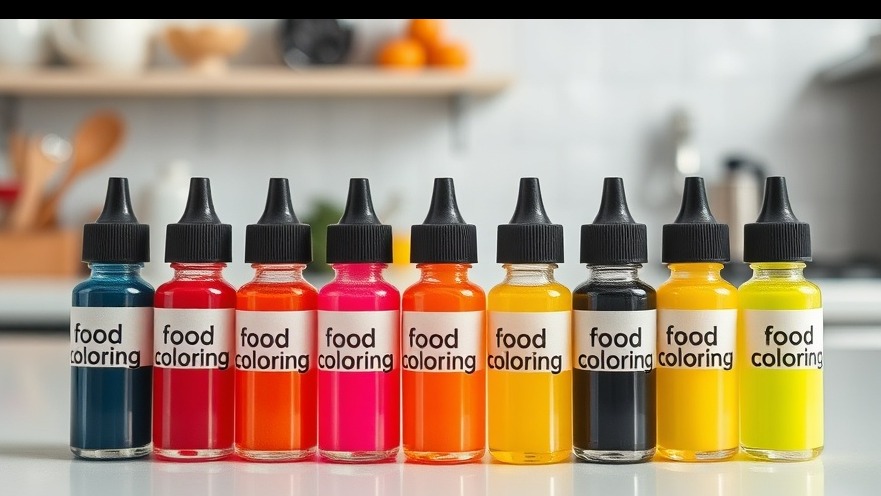
Phasing Out Synthetic Food Colorings: A Crucial Step for Health
In recent months, the U.S. Department of Health and Human Services (HHS) and the Food and Drug Administration (FDA) announced a ground-breaking initiative to ban synthetic food colorings linked to health concerns, primarily targeting oil-based dyes like Citrus Red No. 2 and Orange B. As part of the overarching Make America Healthy Again (MAHA) campaign, Secretary Robert F. Kennedy Jr. and FDA Commissioner Dr. Marty Makary emphasize the importance of children’s health by transitioning to safer, more natural alternatives.
The Motivations Behind the Ban
The push to eliminate certain synthetic dyes is rooted in longstanding debates regarding their health effects, particularly concerning children’s development and well-being. Kennedy remarked that the regulation is necessary to end the 'era of petroleum-based chemicals' in foods, signifying a compelling commitment to transparency and public health. The involvement of the National Institutes of Health (NIH) to research the impacts of these dyes is a promising sign of advancing public health policy.
Critics Voice Concerns Over the Timeline
Despite the positive intent behind this ban, critics argue that the initiatives lack immediate enforceability. The phased approach may depend heavily on voluntary compliance from food industry giants, raising questions about the efficacy of self-regulation. For concierge medical practice owners, understanding the implications of such regulatory changes can not only fortify reputation but could also lead to potential enhancements in patient trust. As health-conscious consumers increasingly gravitate towards safer, natural products, aligning your practice with these consumer trends could position your business as a leading advocate for health.
Global Trends in Food Safety Regulations
In Europe and Canada, where stringent regulations have long prohibited harmful color additives, there is a marked public shift towards transparency and quality in food products. These regions have pioneered the use of natural food colorings that not only enrich diets but also bolster food safety. Drawing parallels from these successful implementations can inform American regulatory frameworks and inspire local practices to adopt stricter quality controls that resonate with the growing demand for health-conscious food choices.
Consumer Expectations and Business Adaptation
The evolving landscape of the food industry calls for adaptive strategies from health providers and related businesses. As consumers become more vigilant about what goes into their meals, it will be essential for practices to communicate their commitment to patient well-being. This may include offering clear guidance on healthy eating or partnering with local vendors committed to providing clean, natural foods free from synthetic additives. By doing so, concierge practices can not only secure their reputation but also foster a deeper trust with patients, who look to their healthcare providers for leadership in health decisions.
Conclusion and Call to Action
As the FDA lays down the groundwork for a safer food system, it presents an opportune moment for those in the healthcare field to step forward. By aligning your medical concierge practice with the core values centered around health safety and transparency, you can strengthen community ties and drive patient loyalty. Monitor the ongoing developments from the FDA and engage with your local community on the importance of natural nutrition in enhancing health and wellness. Start today by educating your patients about the benefits of choosing natural food options and how these changes align with their health goals. For healthcare providers, adapting to these trends not only fulfills a duty to protect public health but also enhances the integrity and appeal of their practice.
 Add Row
Add Row  Add
Add 




Write A Comment